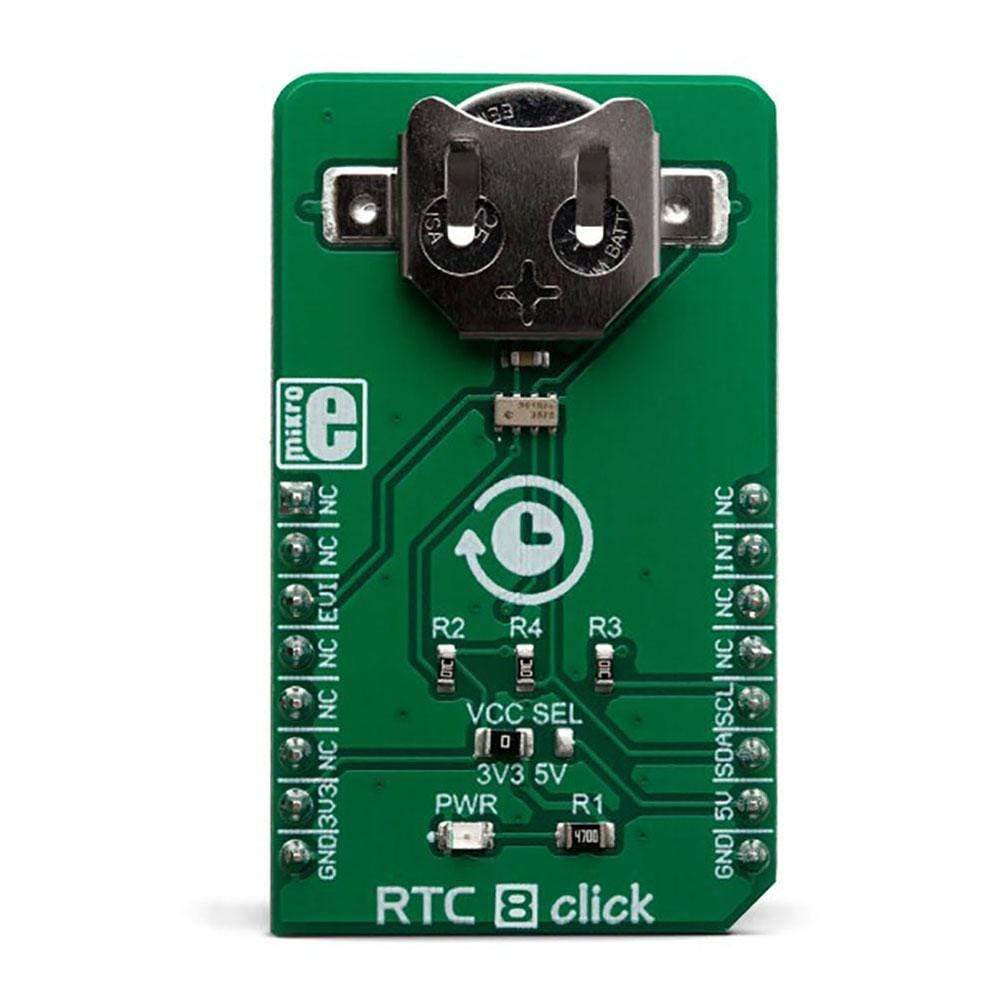



Key Features
Overview
The RTC 8 Click Board™ is a real-time clock module that has an extremely low power consumption, allowing it to be used with a single button cell battery, for an extended period of time. The RV-3028-C7 module built on the RTC 8 Click Board™ is able to output the time in the standard format, as well as in the 32-bit UNIX format. Integrated, factory calibrated crystal operating at 32.768 kHz ensures a very low time deviation.
The compensation and offset data are stored within the internal non-volatile memory. There is also a possibility to password-protect the configuration parameters. An advanced interrupt feature allows many different uses such as alarm function, countdown timer function, external event detection function with time stamp and much more.
Downloads
Das RTC 8 Click Board™ ist ein Echtzeituhrmodul mit extrem niedrigem Stromverbrauch, sodass es über einen längeren Zeitraum mit einer einzigen Knopfzellenbatterie verwendet werden kann. Das auf dem RTC 8 Click Board™ aufgebaute RV-3028-C7-Modul kann die Zeit sowohl im Standardformat als auch im 32-Bit-UNIX-Format ausgeben. Ein integrierter, werkseitig kalibrierter Quarz mit 32,768 kHz sorgt für eine sehr geringe Zeitabweichung.
Die Kompensations- und Offsetdaten werden im internen nichtflüchtigen Speicher abgelegt. Es besteht auch die Möglichkeit, die Konfigurationsparameter mit einem Passwort zu schützen. Eine erweiterte Interrupt-Funktion ermöglicht viele verschiedene Einsatzmöglichkeiten wie Alarmfunktion, Countdown-Timer-Funktion, externe Ereigniserkennungsfunktion mit Zeitstempel und vieles mehr.
| General Information | |
|---|---|
Part Number (SKU) |
MIKROE-3456
|
Manufacturer |
|
| Physical and Mechanical | |
Weight |
0.02 kg
|
| Other | |
Country of Origin |
|
HS Code Customs Tariff code
|
|
EAN |
8606018714995
|
Warranty |
|
Frequently Asked Questions
Have a Question?
Be the first to ask a question about this.




